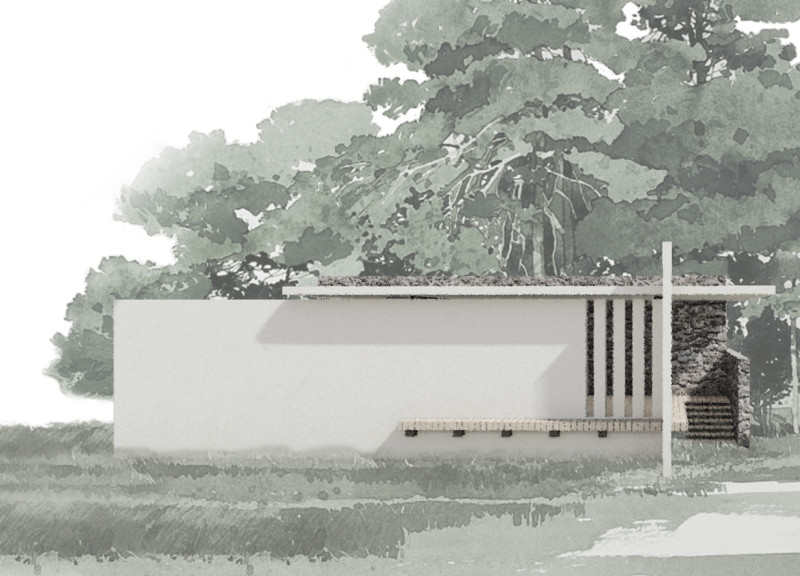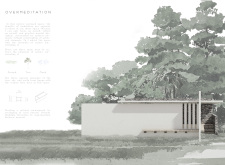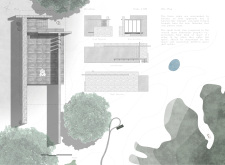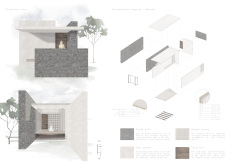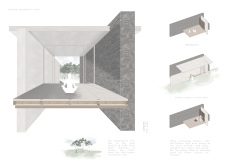5 key facts about this project
The design is located in a serene environment that promotes meditation and self-reflection. It aims to create a peaceful space where people can connect with nature. The overall goal is to support mental discipline, allowing visitors to focus and find tranquility by removing artificial distractions from their surroundings.
Elemental Composition
At the heart of the design are three key elements: ground, tree, and cloud. These elements are intentionally woven into the layout to create a strong connection between the architecture and the landscape. The building is framed by three wooded sides, forming a triangular approach that not only guides visitors toward the entrance but also enhances their experience of the natural context surrounding the structure.
Spatial Arrangement
Inside, the long walls reinforce the themes of earth, trees, and sky, inviting reflection and calmness. The interior spaces have been arranged thoughtfully to promote a meditative atmosphere, allowing individuals to become immersed in their surroundings. Each design choice helps create a sense of peace and enhances interactions between the indoors and the outside environment.
Material Selection
Material choices are essential in shaping the overall character of the design. Light wooden tiles and ply wood contribute warmth to the space, while glass wool offers insulation for better energy efficiency. Lime plaster is used on both the interior and exterior walls, aligning with sustainability goals by minimizing carbon emissions. Additionally, a basalt wall sourced from New Zealand grounds the building in its local setting and adds visual texture.
Functional Design Elements
The design also incorporates practical features that enhance usability. For example, a closet can be taken apart to create different furniture setups, such as a sitting or standing table for floral essence extraction. This flexibility emphasizes the functionality of the space while supporting its core intention of fostering mindfulness. Furthermore, bright timber flooring complements the darker walls, resulting in a well-balanced and visually appealing atmosphere throughout.


